I still have my paludarium and I was wondering if it would be a good idea to have a tube attached from the formicarium onto the island.
It will go partially under water so they still can't escape from the island.
What do u guys think.













How big is the formicarium? If it is a small compact formicarium I would just unplug it and set it on the island. The ants will move in once they realize they have access to dirt.
How big is the formicarium? If it is a small compact formicarium I would just unplug it and set it on the island. The ants will move in once they realize they have access to dirt.
You might want to keep the island drier tho. It looks really wet.
My Main Journal | My Neivamyrmex Journal | My Ant Adoption | My YouTube
Join the TennesseeAnts Discord Server! https://discord.gg/JbKwPgs
He's moving a colony of Myrmica into it.... Myrmica need a minimum of 80% humidity in my very lengthy experience.You might want to keep the island drier tho. It looks really wet.
True but the outside looked muddy a little. In the middle it should be a bit drier than the outside is.He's moving a colony of Myrmica into it.... Myrmica need a minimum of 80% humidity in my very lengthy experience.You might want to keep the island drier tho. It looks really wet.
Edited by Kaelwizard, July 3 2019 - 4:49 AM.
I built a new (ytong) nest for my small Camponotus aethiops colony:

The glass (15 cm x 10 cm) is attached via neodym magnets:
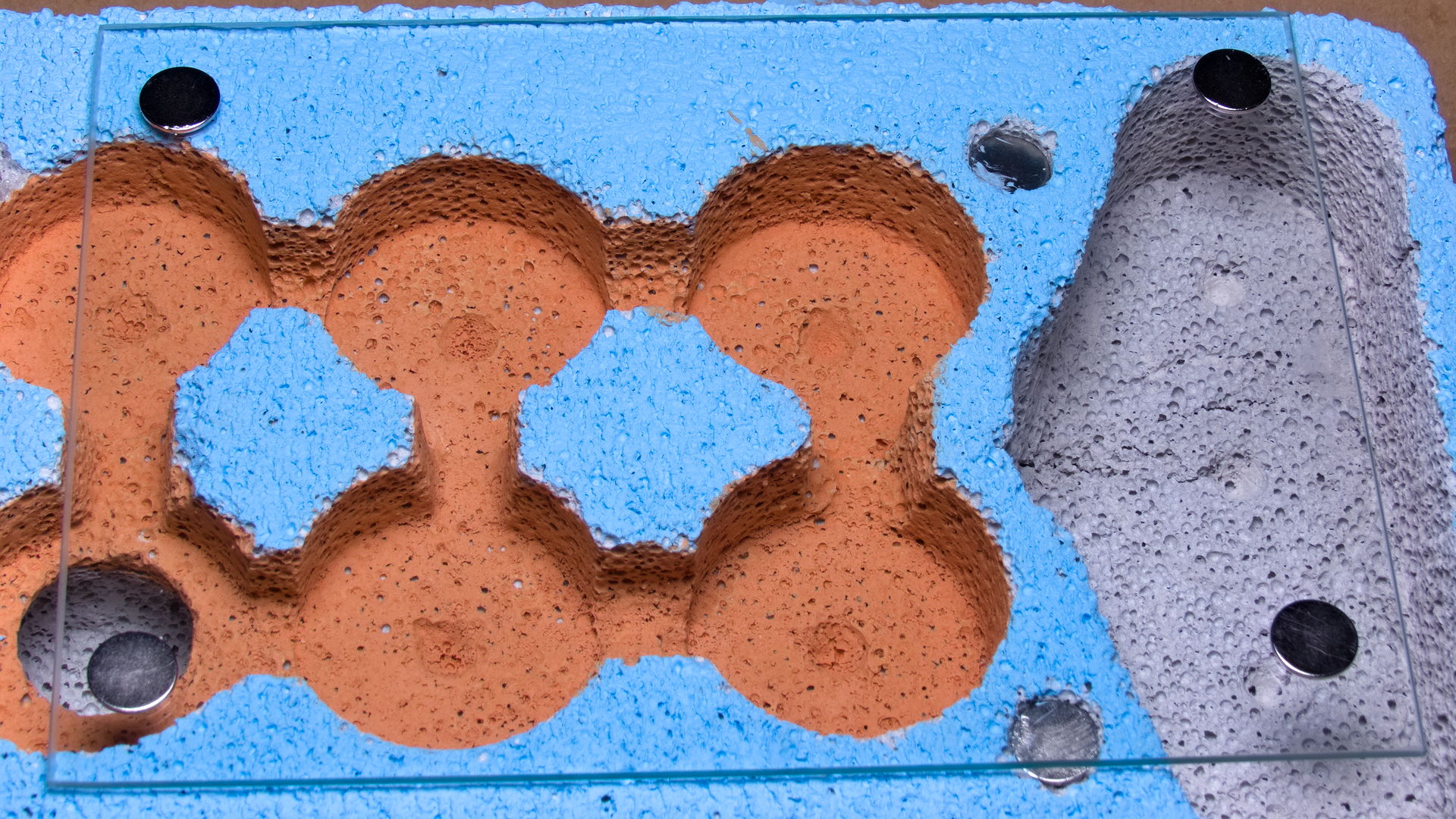
A 20 mm tube can be connected to the nest:

I used blue acrylic paint for the outside and loam paint for the chambers and tunnels.
Wow, that’s looks good. I assume you used a dremel or some router to achieve such perfection.
No I didn't. I used a 35 mm Forstner bit. Forstner bits are great for horizontal nests, since you can easily drill in chambers in various sizes. For the water reservoir I also used this forstner bit and after that I smoothed the walls with a mortise chisel and a wood rasp. I find dremel not very efficient for carving in large chambers or tunnels, but if you want to even further smooth the surface you can than use a dremel.
now that i have settled on a basic design, it is simply a process of perfecting it. I think tubes are a hassle, especially in founding formicaria or in attaching formicariums with ants already in them. I have been playing with magnets placed behind the glass on either side of an entrance hole, these allow the formicaria to sort of "snap" together with each other and with their outworlds, just as an experiment i bought some fairly strong magnets at the hardware store, they work to a degree but i would need much stronger ones to be satisfied, as a light bump can currently pull them apart. Either way i like this better than tubing. I also relocated the water hole to the top of the nest and made it much larger, as trying to fill that giant tank with a syringe was ridiculous, now you can just fill it up at the faucet or with a cup of water or something, it also allowed me to eliminate the handles which were hideous, and go with simple hole in the faceplate.
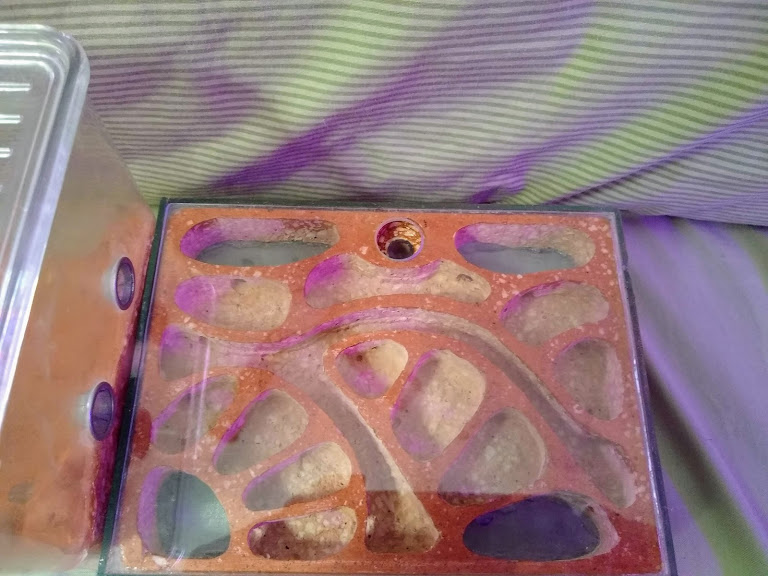
the larger fill port and access hole
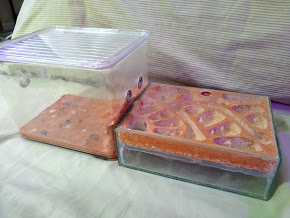
attached to a simple outworld i threw together for the purposes of this test
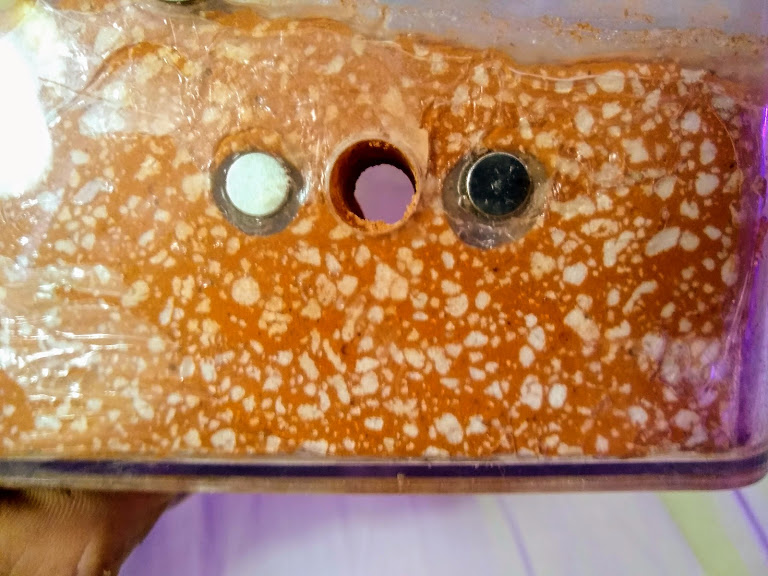
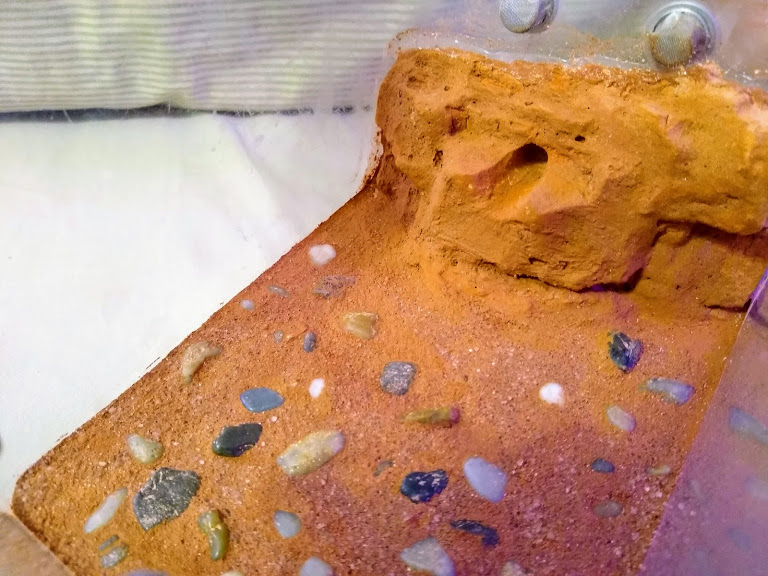
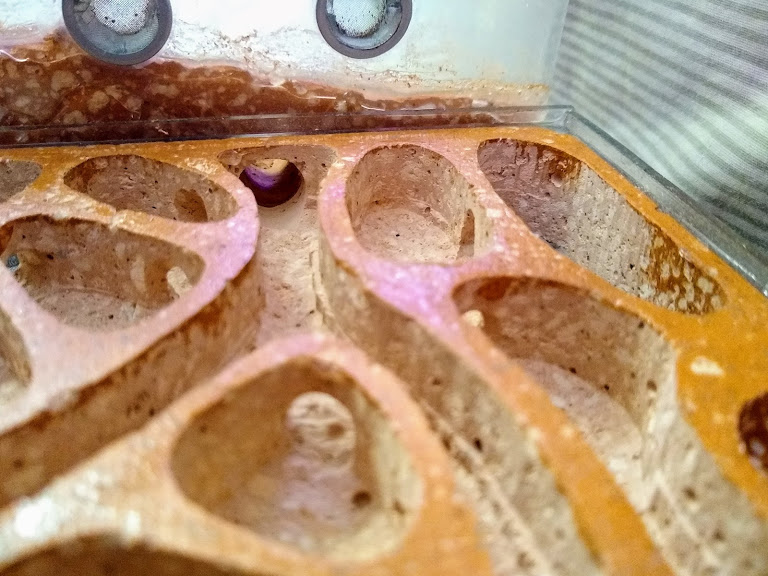
connection to outworld
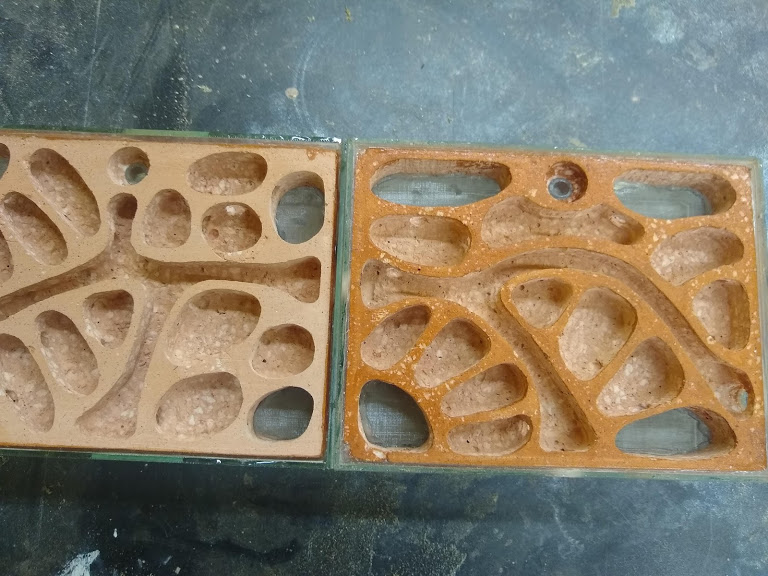
connected to an unfinished nest
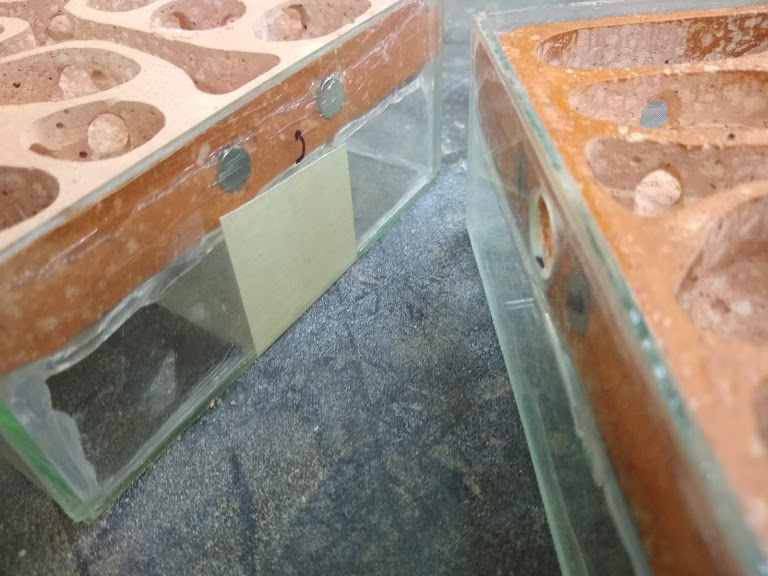
union and magnets, i would not think a 1/4" of glass would cut down on their force this drastically
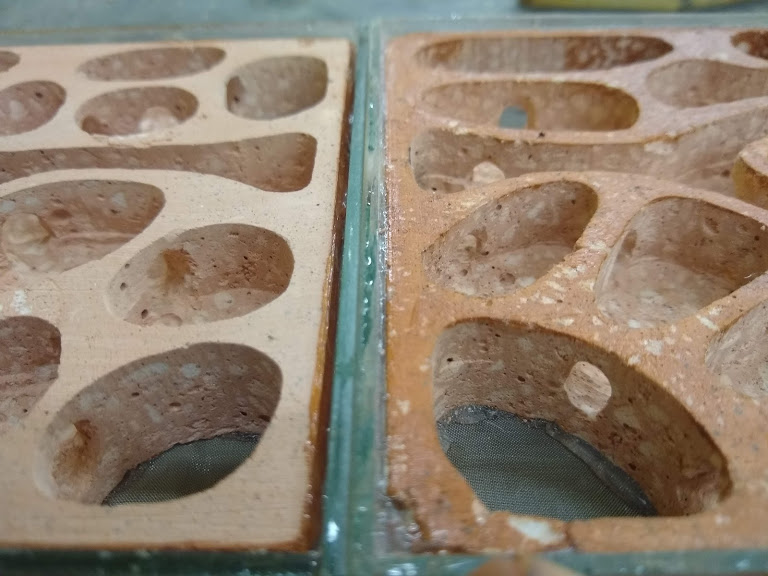
tight seal, i cannot fit a piece of paper between them
video demonstrating the concept
I built my small Crematogaster scutellaris colony a simple wood nest:

As basis I used a wooden strip made from spruce wood, which I sawed to the right size (each 15 cm x 6 cm x 1.5 cm).
In the middle piece I drilled chambers with a forstner bit. Unfortunately, I made too many chambers, so the walls broke and now I basically have one large chamber. I also had to fix one side with wood putty.
The glass pane was fixed with aquarium silicone.
The cover is attached by a hinge:


The ants store brood near the glass, on which a heating mat is placed:

A short tube made from food save PVC is connected to the outworld via a cable gland:

The nest isn’t moisturized, this ant species can live in dry nests.
I built my small Crematogaster scutellaris colony a simple wood nest:
As basis I used a wooden strip made from spruce wood, which I sawed to the right size (each 15 cm x 6 cm x 1.5 cm).
In the middle piece I drilled chambers with a forstner bit. Unfortunately, I made too many chambers, so the walls broke and now I basically have one large chamber. I also had to fix one side with wood putty.
The glass pane was fixed with aquarium silicone.
The cover is attached by a hinge:
The ants store brood near the glass, on which a heating mat is placed:
A short tube made from food save PVC is connected to the outworld via a cable gland:
The nest isn’t moisturized, this ant species can live in dry nests.
I have being working on a small modular nest... I have not put a lot of effort honestly but now that I have some ants on my way from SuperFrank I got back to the files on the computer and throw a couple of prototypes to test!
This is the general idea, there is a lot of work that can be done to improve the design but as a single module/founding chamber sure will work...
This was one of the original 3D printed prototypes, I will be using vinyl tubing to provide water for moisture and to interconnect modules (similar idea of how the Nestmates from THA work), and I was planning to use magnets to keep the glass on place but as this will be a modular system I don't want to take any chances to knock off the glass while trying to connect another unit or moving the whole thing so I decide to just use some corner pieces, another option was to use plexyglass and screws but for the sake of visibility I will be using glass...
And white or light color PLA instead of black or I will not be able to see any ants!!!
"Where must we go, we who wander this wasteland, in search of our better selves?"
-The First History Man
So simple, yet elegant! I wonder if our American Crematogaster would do well in a nest like that?
If the species builds nests in dead wood the chances are high that they don't require any extra moisture too. I mean you can just build one, attach it to the outworld, apply a heat source and see if they move in by themselves, like my ants did.
Edited by Barristan, July 9 2019 - 9:54 PM.
I built my small Crematogaster scutellaris colony a simple wood nest:
As basis I used a wooden strip made from spruce wood, which I sawed to the right size (each 15 cm x 6 cm x 1.5 cm).
In the middle piece I drilled chambers with a forstner bit. Unfortunately, I made too many chambers, so the walls broke and now I basically have one large chamber. I also had to fix one side with wood putty.
The glass pane was fixed with aquarium silicone.
The cover is attached by a hinge:
The ants store brood near the glass, on which a heating mat is placed:
A short tube made from food save PVC is connected to the outworld via a cable gland:
The nest isn’t moisturized, this ant species can live in dry nests.
Aren't you scared they will escape by chewing the wood? My Crematogaster s. even chewed the plastic tubing. Only 3mm left and I have to replace it.
I built my small Crematogaster scutellaris colony a simple wood nest:
As basis I used a wooden strip made from spruce wood, which I sawed to the right size (each 15 cm x 6 cm x 1.5 cm).
In the middle piece I drilled chambers with a forstner bit. Unfortunately, I made too many chambers, so the walls broke and now I basically have one large chamber. I also had to fix one side with wood putty.
The glass pane was fixed with aquarium silicone.
The cover is attached by a hinge:
The ants store brood near the glass, on which a heating mat is placed:
A short tube made from food save PVC is connected to the outworld via a cable gland:
The nest isn’t moisturized, this ant species can live in dry nests.
Here is my grout nest, is it good?
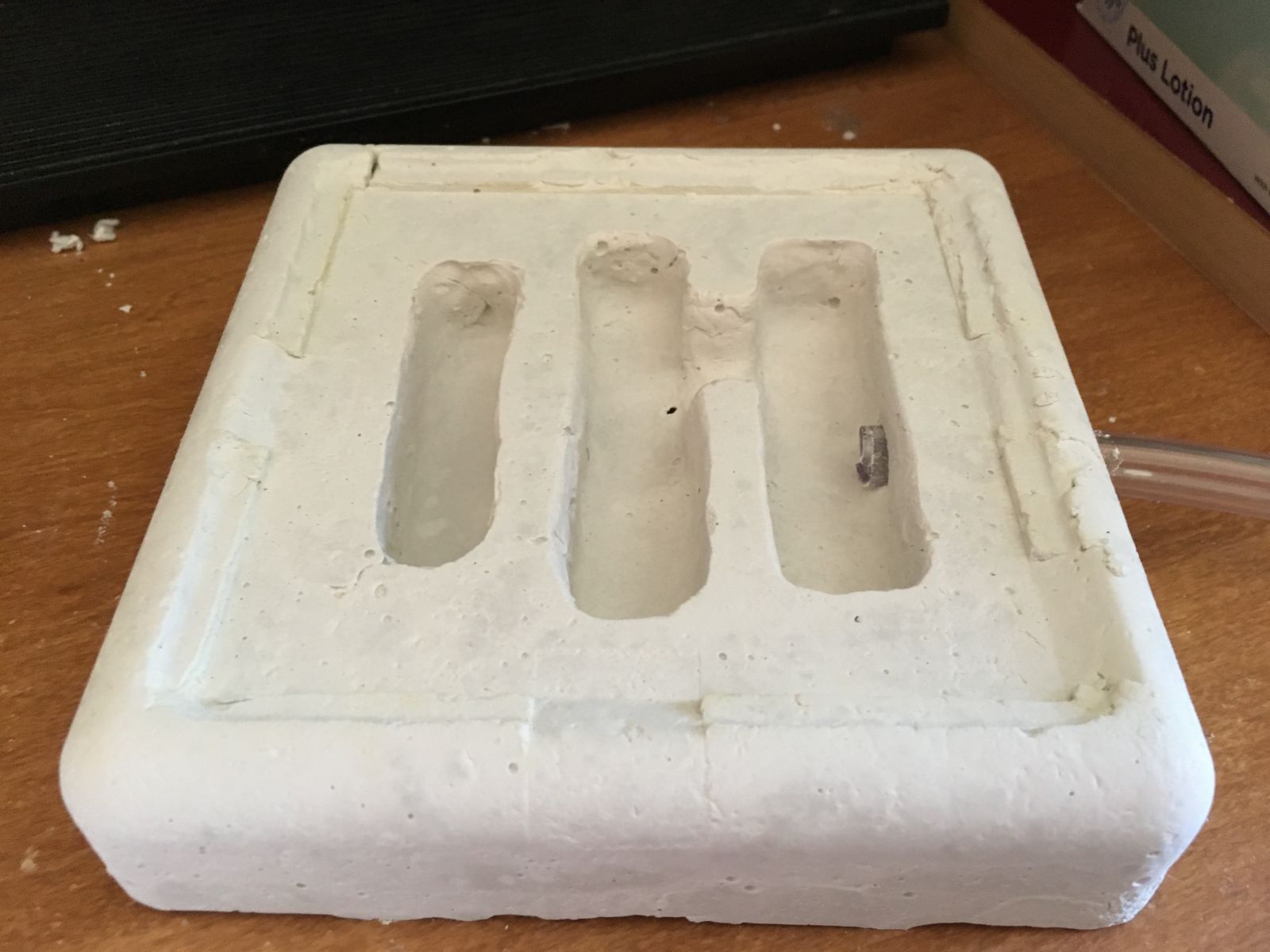
It is about 5 inches by 5 inches, made of a grout perlite mixture as is detailed in the CrystalS formicarium tutorial. The water chamber is deeper than the others, just to make sure that any flooding occurs in there, away from the ants. Still kind of smells like zucchini, likely from the olive oil, a few hours after being removed from the mould. Of course I still have to paint it, and add the glass, and do the outworld (One of those little plastic terrariums we all put bugs in when we were seven.). Has anyone ever considered 3D printing a grout formicarium mould, to streamline the process? I'm not sure if it would leave ugly ridges, be hard to get out, or if it would be perfect. Maybe it's time to finish that 3D printer.
Edited by Antennal_Scrobe, July 23 2019 - 10:04 AM.
Currently keeping:
Tetramorium immigrans, Pogonomyrmex occidentalis
Myrmica punctiventris, Formica subsericea
Formica pallidefulva, Aphaeogaster cf. rudis
Camponotus pennsylvanicus
Camponotus nearcticus
Crematogaster cerasi
Temnothorax ambiguus
Prenolepis imparis
 |
Ant Keeping →
Ant Keeping Journals →
The_Gaming-gate's Ant Nest DesignStarted by The_Gaming-gate , Apr 4 2024 |
|

|
|
 |
Ants & Myrmecology →
General →
PlasterStarted by The_Gaming-gate , Apr 3 2024 |
|

|
|
Ant Keeping →
General Ant Keeping →
Formicarium concept: slip casting potteryStarted by Nixionika , Mar 5 2024 |
|

|
||
Ant Keeping →
General Ant Keeping →
What is a good sized outworld for ants?Started by cooIboyJ , Mar 3 2024 |
|
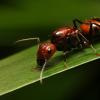
|
||
Ant Keeping →
General Ant Keeping →
What should I use for an outworld floor.Started by cooIboyJ , Mar 3 2024 |
|
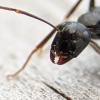
|
0 members, 1 guests, 0 anonymous users